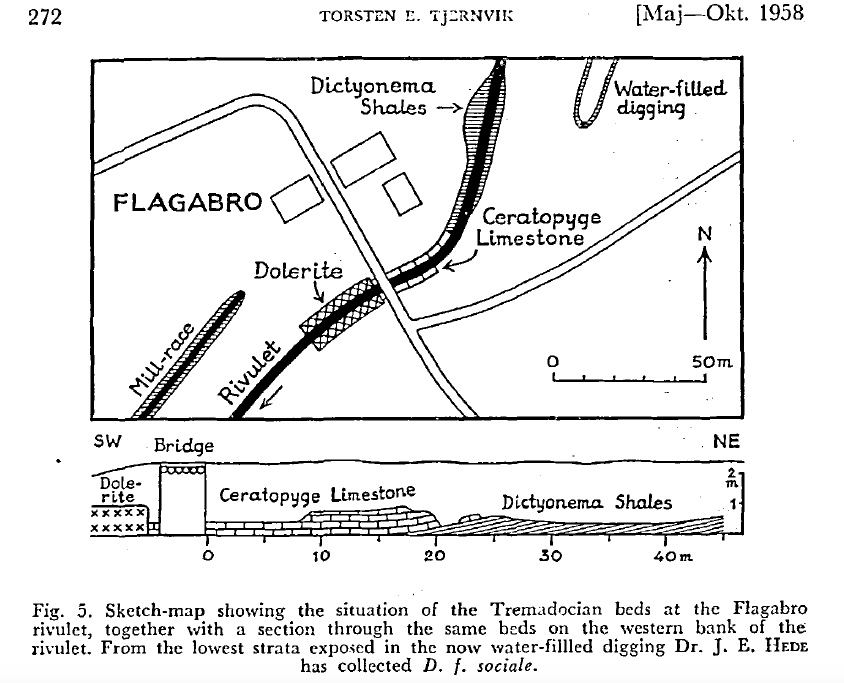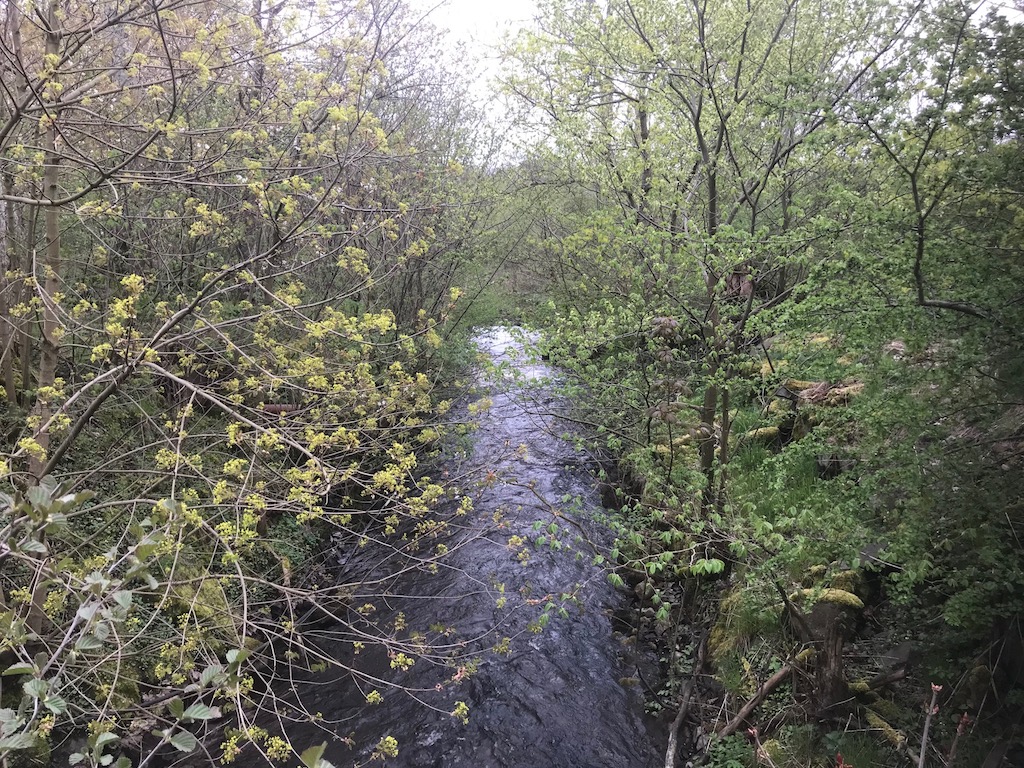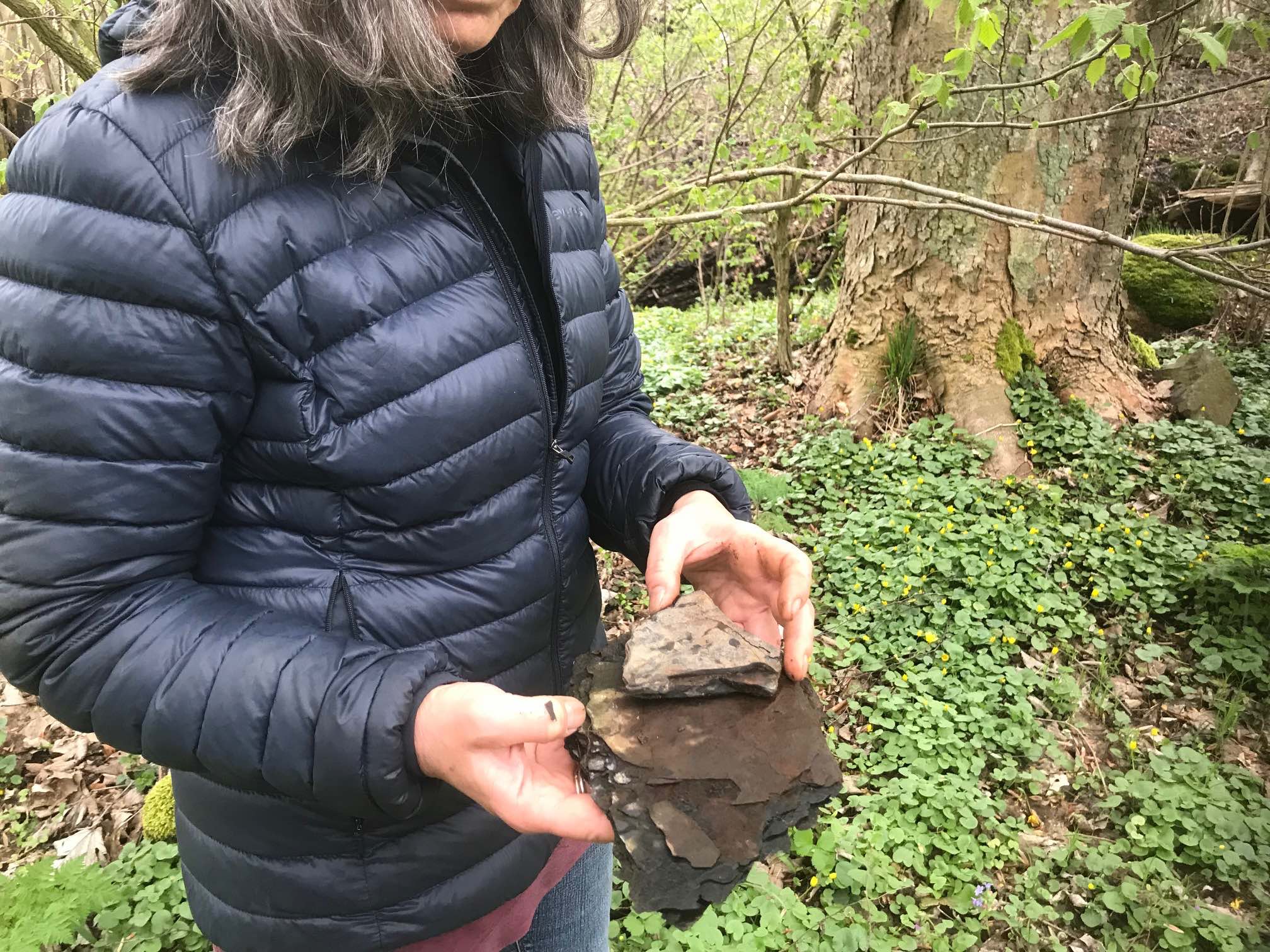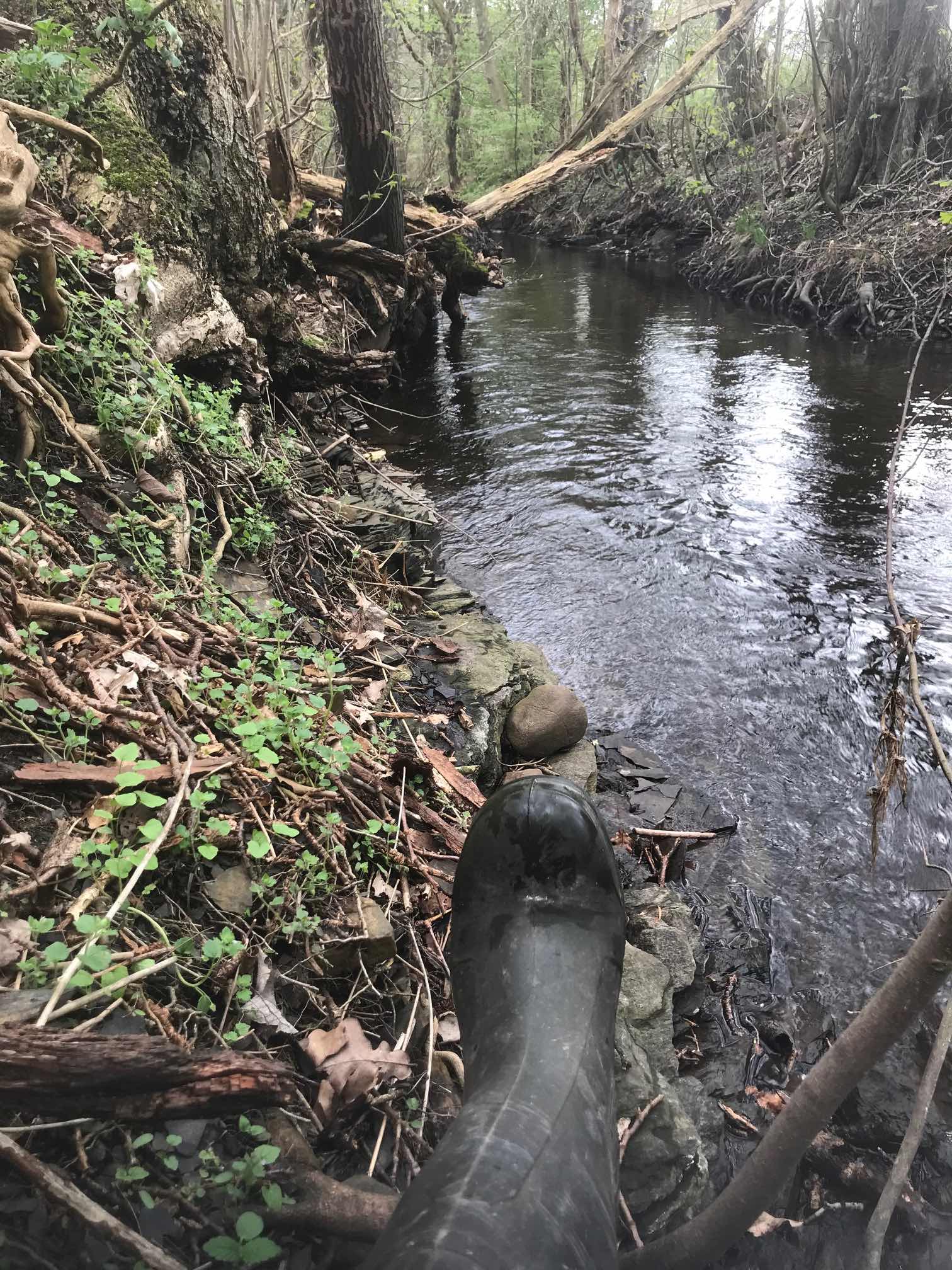Flagabro is a small hamlet in eastern Skåne. Lately it has gained international fame. Well – this is actually not entirely correct, because it is not the hamlet that is famous, but the creek that runs close to the hamlet and the rocks that are exposed along the creek. The succession of rocks has been known for a long time (see for example: Torsten E. Tjernvik (1958) The Tremadocian Beds at Flagabro in South-Eastern Scania (Sweden), Geologiska Föreningen i Stockholm Förhandlingar, 80:3, 259-276, DOI:10.1080/11035895809454886). Accordingly, geologists have visited the site on multiple occasions to take samples, to study the fossil content of the rocks, to attribute an age to the rocks and to understand their former depositional environment.
Tjernvik (1958), who worked on a drill core from Flagabro, moreover carefully described the sequence of rocks along the creek and presented a map of the area, which shows a small quarry (indicated by water filled digging).

In an excursion guide book, to which Jan Bergström contributed with knowledge on the geology of Skåne (IV International Symposium on the Ordovician System held in Norway in August 1982; edited by D. L. Bruton & S. H. Williams), the same map is reproduced. Jan Bergström describes the site and the rocks as follows:
“Just east of a small bridge there is the l m thick, grey-coloured and calcilutitic Ceratopyge Limestone, which forms the top of the Tremadoc. This limestone has yielded a fauna including trilobites and brachiopods (Tjernvik 1958). The limestone is underlain by a thin sheet of dark Ceratopyge Shale with the phyllocarid crustacean Ceratiocaris and brachiopods. This is in turn underlain by the 11 m thick Dictyonema Shale, an alum shale forming the base of the Tremadoc. This shale is highly bituminous and contains concretions of stinkstone ( = bituminous limestone), baryte and pyrite. The total carbon content is 11% and the sulphur content is 2%, while the uranium content is low, only same 50-60 g/t (0.005%). The Dictyonema Shale is known for its content of vanadium (around 0. 4%); a water-filled digging 100m NE of the bridge is the remains of an attempt at extraction.”
Today I thought I should visit this famous site, none the less since Scandivanadium has made a big thing out of their sampling of shale along the creek and the analysis of the rock samples. Details of the analyses have, among others, been presented in Scandivanadium’s ASX Announcement of December 12, 2018. In several of Scandivanadium’s brochures the above shown map has been reproduced. It would have been nice if the author of the map would have been acknowledged.
What is puzzling when reading through Scandivanadium’s newsletters and working plans and other documents, is that they repeat that the small mine that once existed in Flagabro was used to extract Vanadiumpentoxide:“At Flagabro Creek 180m of outcrop was sampled where a full sequence and thickness of the mineralised Dictyonema Formation is exposed at surface within the sedimentary black shale host. Assay results showed peak grades of 0.81% V2O5 and 13 of the 14 samples collected within the highgrade D2 seam exceeded 0.4% V2O5. Interpretation of mapping data indicated a true thickness of the targeted Dictyonema Formation exceeding 10m. The grade and thickness mapped for the D2 seam from Flagabro Creek compare well with the 11m thickness and production grade of 0.7% V2O5 reported from the historic quarry by Bergstrom in 1982.” (Skåne Vanadium project Update – ASX Announcement of December 12, 2018).
Unfortunately I have not found any publication, which mentions that Vanadiumpentoxide was mined in the small quarry. The only publication by Bergström, which mentions the quarry is the 1982 excursion guide cited above (IV International Symposium on the Ordovician System held in Norway in August 1982; edited by D. L. Bruton & S. H. Williams). But what Jan Bergström wrote in the guidebook is – in my opinion – different from Svandivanadium’s interpretation of his words. Bergström wrote: The Dictyonema Shale is known for its content of vanadium (around 0. 4%); a water-filled digging 100m NE of the bridge is the remains of an attempt at extraction.” Extraction of shale? Extraction of Vanadium?
Today I finally visited the famous Flagabro site and had a look at the now even more famous Dictyonema shale. Here are a few pictures …



The Flagabro Creek and its close surroundings is unfortunately not a very pleasant sight. It could do with some cleaning up. But on the other hand, what’s the point if Scandivanadium opens its Vanadium mine – things will get really much more messy then.

